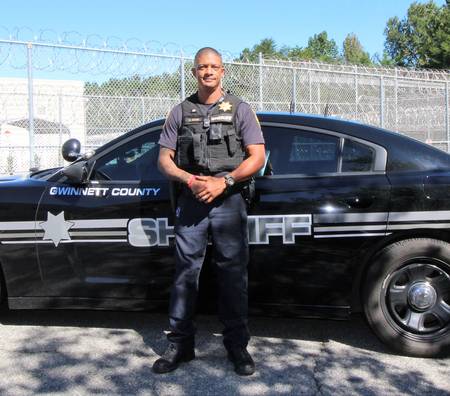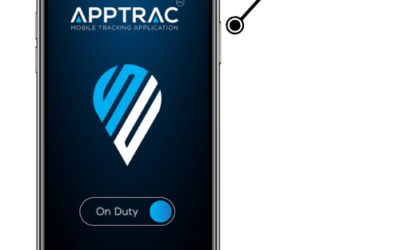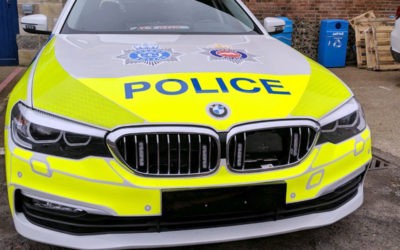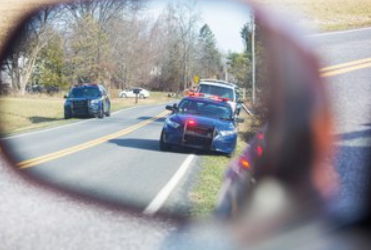Hot water for “hot plates”: How one Georgia sheriff’s office is tackling stolen and fleeing vehicles

Sgt. Mike Baker with the Gwinnett County Sheriff’s Office uses the StarChase system, when possible, to avoid potentially deadly pursuits. (image/Gwinnett Co. Sheriff’s Office)
An easy-to-use GPS tagging and tracking solution ends helps end pursuits quickly, if they even start at all
Sponsored by StarChase
By Laura Neitzel, PoliceOne BrandFocus Staff
Gwinnett County, Georgia, located 30 miles northeast of Atlanta, experiences the traffic pains that come along with rapid population growth. Twice a day during the week, its roads and highways are jammed with commuters traveling to and from the city center. Many of the traffic stops patrol officers make on these roads are for drivers violating the recently passed Georgia law against using a cellphone while driving – as well as the occasional stolen vehicle.
Mike Baker is a master deputy with the Gwinnett County Sheriff’s Office, Field Operations Division. When he’s not serving warrants, he’s part of the license plate reader (LPR) unit where he encounters a lot of stolen vehicles. Although GCSO does allow pursuits, the heavy traffic makes pursuits more difficult and more dangerous, meaning it’s doubly important to end them quickly. GCSO uses StarChase pursuit management technology as an alternative means of tracking and catching fleeing vehicles.
“StarChase is another tool for us to use,” said Baker. “When traffic is so congested and it’s just too dangerous to chase, we will deploy a StarChase GPS tag so that we can back off the vehicle, track it and still manage to apprehend the car and/or suspects when they come to a place where it’s safe for us to do so.”
The following incident illustrates how StarChase’s GPS tagging system and App-Trac 365, its web-based officer safety tracking app, work to avoid a pursuit altogether or to end it quickly if one ensues.
TAKING A SLOW, STEADY AND SAFE APPROACH
Not too long after GCSO deployed StarChase, Baker came across a stolen vehicle. While waiting for backup units to arrive, Baker moved in to deploy a StarChase GPS tag.
“Unbeknownst to the driver at the time, when I had moved up behind the vehicle to deploy the StarChase round, it was totally without lights and sirens,” said Baker. “We rolled up to it, got close enough to it to deploy the round, and then just eased back off of it.”
Using StarChase secure mapping to obtain critical location intelligence, including the vehicle’s speed and exact location, GCSO patiently tracked the stolen vehicle. GCSO relayed their position to dispatch who kept the Georgia State Patrol and other agencies informed that they had deployed a GPS tracker on a stolen vehicle and were tracking it across jurisdictions.
The vehicle eventually stopped at a neighborhood recreation center two counties over. When law enforcement arrived, they apprehended the female passenger, who had outstanding warrants, although the driver got away on foot.
Because GCSO was able to deploy StarChase, law enforcement successfully recovered the stolen vehicle without damage and without endangering lives with a high-speed pursuit. “I don’t believe the driver really suspected anything,” said Baker. “It was just safer to deploy a StarChase round on it and then track the vehicle, which essentially is what StarChase is designed to do.”
TECHNOLOGY AND TRAINING THAT’S OFFICER-FRIENDLY
Baker appreciates that the StarChase system is easy to use and highly visible.
“To load and put projectiles in the launcher is a very simple process,” said Baker. “The controls are well lit and placed inside the center console of the vehicle. It’s got a green dot laser that gives you a reference point on the back of the suspect vehicle to know where the round may impact the vehicle when you deploy it. It works in all types of lighting – daytime and in the dark of night. It’s very visible and easy to see.”
The system also comes with remote control on a key fob so even if the officer is outside the patrol vehicle, they can quickly deploy the launcher and tag the suspect’s vehicle.
GCSO deployed its StarChase program in March 2018 after having the opportunity to literally take it for a test drive at Road Atlanta, with StarChase units on a demo car. The agency’s decision to deploy StarChase was swift and the training was easy, says Baker.
“They’ve made it so that anybody in law enforcement, with all the types of equipment that we use on a daily basis in different agencies, this is just something very simple to use,” said Baker. “The only other part of the training you really have to do is to practice deploying it.”
SHARING THEIR SUCCESS
Baker has become somewhat of a celebrity in Gwinnett County, thanks to GCSO being featured on the A&E reality series Live PD. The agency has deployed StarChase over 30 times with a better than 95% successful apprehension rate.
Watch this episode of Live PD to see Baker using StarChase to tag a stolen vehicle and safely apprehend the suspect:
As a result of deploying the StarChase GPS tag in several episodes, Baker is often contacted by agencies across the country interested in the technology. Baker says they found out quickly that the StarChase system is very effective. In the heat of a pursuit, an officer must pay attention not only to pursuing the suspect, but also to traffic conditions, weather and other factors, all while radioing position and giving updates. With the StarChase GPS launcher, once a vehicle is tagged, they can slow down, back off and focus instead of getting tunnel vision which can cause mistakes.
He also tells other agencies that StarChase has been around for a few years, they continue to improve the technology and the capabilities of the launcher, the rounds, the battery life and other features significantly, increasing its value, ease of use and effectiveness.
Baker especially recommends StarChase for agencies with a policy that does not allow them to pursue. He says it can act as a deterrent for criminals because it’s not something they expect.
“We turn the lights off after we’ve tagged the vehicle,” said Baker. “They slow down dramatically because they’re not being chased anymore. They feel they’ve got gotten away. And then when we get to where it’s safe for us to pounce on the vehicle again and surround it, that’s when the surprise is. It’s over at that point.”



